Description
THERAPEUTIC INDICATIONS:
Hypertension
Treatment of essential hypertension in adults.
Recent myocardial infarction
Treatment of clinically stable adult patients with symptomatic heart failure or asymptomatic left ventricular systolic dysfunction after a recent (12 hours-10 days) myocardial infarction.
Heart failure
Treatment of adult patients with symptomatic heart failure when ACE-inhibitors are not tolerated or in beta-blocker intolerant patients as add-on therapy to ACE inhibitors when mineralocorticoid receptor antagonists cannot be used.
POSOLOGY AND METHOD OF ADMINISTRATION:
Posology
Recent myocardial infarction
In clinically stable patients, therapy may be initiated as early as 12 hours after a myocardial infarction. After an initial dose of 20 mg valsartan twice daily, valsartan should be titrated to 40 mg, 80 mg, and 160 mg twice daily over the next few weeks.
The target maximum dose is 160 mg twice daily. In general, it is recommended that patients achieve a dose level of 80 mg twice daily by two weeks after treatment initiation and that the target maximum dose, 160 mg twice daily, be achieved by three months, based on the patient’s tolerability. If symptomatic hypotension or renal dysfunction occur, consideration should be given to a dosage reduction.
Valsartan may be used in patients treated with other post-myocardial infarction therapies, e.g. thrombolytics, acetylsalicylic acid, beta blockers, statins, and diuretics. The combination with ACE inhibitors is not recommended.
Evaluation of post-myocardial infarction patients should always include assessment of renal function.
Heart failure
The recommended starting dose of Valsartan is 40mg twice daily. Uptitration to 80mg and 160mg twice daily should be done at intervals of at least two weeks to the highest dose, as tolerated by the patient. Consideration should be given to reducing the dose of concomitant diuretics. The maximum daily dose administered in clinical trials is 320 mg in divided doses.
Valsartan may be administered with other heart failure therapies. However, the triple combination of an ACE-inhibitor, valsartan and a beta blocker or a potassium-sparing diuretic is not recommended.
Evaluation of patients with heart failure should always include assessment of renal function.
Hypertension
The recommended starting dose of Valsartan is 80mg once daily.
The antihypertensive effect is substantially present within 2 weeks, and maximal effects are attained within 4 weeks. In some patients whose blood pressure is not adequately controlled, the dose can be increased to 160mg and to a maximum of 320mg.
Valsartan may also be administered with other antihypertensive agents. The addition of a diuretic such as hydrochlorothiazide will decrease blood pressure even further in these patients.
Additional information on special populations
Elderly
No dose adjustment is required in elderly patients.
Renal impairment
No dose adjustment is required for patients with a creatinine clearance >10 ml/min. Concomitant use of Valsartan with aliskiren is contraindicated in patients with renal impairment (GFR < 60 mL/min/1.73 m2).
Diabetes Mellitus
Concomitant use of Valsartan with aliskiren is contraindicated in patients with diabetes mellitus.
Hepatic impairment
Valsartan are contraindicated in patients with severe hepatic impairment, biliary cirrhosis and in patients with cholestasis. In patients with mild to moderate hepatic impairment without cholestasis, the dose of valsartan should not exceed 80mg.
Paediatric patients
Valsar is not recommended for use in children below the age of 18 years.
Method of administration
Valsar Capsules may be taken independently of a meal and should be administered with water.
CONTRAINDICATIONS:
Hypersensitivity to the active substance or to any of the excipients.
– Severe hepatic impairment, biliary cirrhosis and cholestasis.
– Pregnancy.
– The concomitant use of Valsartan with aliskiren-containing products is contraindicated in patients with diabetes mellitus or renal impairment (GFR < 60 ml/min/1.73 m2).
SPECIAL WARNINGS AND PRECAUTIONS FOR USE:
Hyperkalaemia
Concomitant use with potassium supplements, potassium-sparing diuretics, salt substitutes containing potassium, or other agents that may increase potassium levels (heparin, etc.) is not recommended. Monitoring of potassium should be undertaken as appropriate.
Impaired renal function
There is currently no experience on the safe use in patients with a creatinine clearance <10 ml/min and patients undergoing dialysis, therefore valsartan should be used with caution in these patients. No dose adjustment is required for adult patients with creatinine clearance >10 ml/min.
The concomitant use of AIIRAs, including valsartan, or of ACE inhibitors with aliskiren is contraindicated in patients with renal impairment (GFR < 60 mL/min/1.73 m2).
Hepatic impairment
In patients with mild to moderate hepatic impairment without cholestasis, valsartan should be used with caution.
Sodium- and/or volume-depleted patients
In severely sodium-depleted and/or volume-depleted patients, such as those receiving high doses of diuretics, symptomatic hypotension may occur in rare cases after initiation of therapy with valsartan. Sodium and/or volume depletion should be corrected before starting treatment with valsartan, for example by reducing the diuretic dose.
Renal artery stenosis
In patients with bilateral renal artery stenosis or stenosis to a solitary kidney, the safe use of valsartan has not been established.
Short-term administration of valsartan to twelve patients with renovascular hypertension secondary to unilateral renal artery stenosis did not induce any significant changes in renal haemodynamics, serum creatinine, or blood urea nitrogen (BUN). However, other agents that affect the renin-angiotensin system may increase blood urea and serum creatinine in patients with unilateral renal artery stenosis, therefore monitoring of renal function is recommended when patients are treated with valsartan.
Kidney transplantation
There is currently no experience on the safe use of valsartan in patients who have recently undergone kidney transplantation.
Primary hyperaldosteronism
Patients with primary hyperaldosteronism should not be treated with valsartan as their renin-angiotensin system is not activated.
Aortic and mitral valve stenosis, obstructive hypertrophic cardiomyopathy
As with all other vasodilators, special caution is indicated in patients suffering from aortic or mitral stenosis, or hypertrophic obstructive cardiomyopathy (HOCM).
Pregnancy
Do not use this product during pregnancy, as it may cause injury or even death of the developing fetus
Recent myocardial infarction
The combination of captopril and valsartan has shown no additional clinical benefit, instead the risk for adverse events increased compared to treatment with the respective therapies. Therefore, the combination of valsartan with an ACE inhibitor is not recommended.
Caution should be observed when initiating therapy in post-myocardial infarction patients. Evaluation of post-myocardial infarction patients should always include assessment of renal function.
Use of valsartan in post-myocardial infarction patients commonly results in some reduction in blood pressure, but discontinuation of therapy because of continuing symptomatic hypotension is not usually necessary provided dosing instructions are followed.
Heart Failure
The risk of adverse reactions, especially hypotension, hyperkalaemia and decreased renal function (including acute renal failure), may increase when Valsartan is used in combination with an ACE-inhibitor. In patients with heart failure, the triple combination of an ACE inhibitor, a beta blocker and valsartan has not shown any clinical benefit.This combination apparently increases the risk for adverse events and is therefore not recommended. Triple combination of an ACE-inhibitor, a mineralocorticoid receptor antagonist and valsartan is also not recommended. Use of these combinations should be under specialist supervision and subject to frequent close monitoring of renal function, electrolytes and blood pressure.
Caution should be observed when initiating therapy in patients with heart failure. Evaluation of patients with heart failure should always include assessment of renal function.
Use of valsartan in patients with heart failure commonly results in some reduction in blood pressure, but discontinuation of therapy because of continuing symptomatic hypotension is not usually necessary provided dosing instructions are followed.
In patients whose renal function may depend on the activity of the renin-angiotensin-aldosterone-system (e.g patients with severe congestive heart failure), treatment with ACE-inhibitors has been associated with oliguria and/or progressive azotaemia and in rare cases with acute renal failure and/or death. As valsartan is an angiotensin II receptor blocker, it cannot be excluded that the use of valsartan may be associated with impairment of the renal function.
ACE-inhibitors and angiotensin II receptor blockers should not be used concomitantly in patients with diabetic nephropathy.
History of angioedema
Angioedema, including swelling of the larynx and glottis, causing airway obstruction and/or swelling of the face, lips, pharynx, and/or tongue has been reported in patients treated with valsartan; some of these patients previously experienced angioedema with other drugs including ACE inhibitors. Valsartan should be immediately discontinued in patients who develop angioedema, and valsartan should not be re-administered.
Dual Blockade of the Renin-Angiotensin-Aldosterone System (RAAS)
There is evidence that the concomitant use of ACE-inhibitors, angiotensin II receptor blockers or aliskiren increases the risk of hypotension, hyperkalaemia and decreased renal function (including acute renal failure). Dual blockade of RAAS through the combined use of ACE-inhibitors, angiotensin II receptor blockers or aliskiren is therefore not recommended.
If dual blockade therapy is considered absolutely necessary, this should only occur under specialist supervision and subject to frequent close monitoring of renal function, electrolytes and blood pressure.
ACE-inhibitors and angiotensin II receptor blockers should not be used concomitantly in patients with diabetic nephropathy.
INTERACTION WITH OTHER MEDICINAL PRODUCTS AND OTHER FORMS OF INTERACTION:
Dual blockage of the Renin-Angiotensin-System (RAS) with AIIRAs, ACE inhibitors, or aliskiren:
Clinical trial data has shown that dual blockade of the renin-angiotensin-aldosterone-system (RAAS) through the combined use of ACE-inhibitors, angiotensin II receptor blockers or aliskiren is associated with a higher frequency of adverse events such as hypotension, hyperkalaemia and decreased renal function (including acute renal failure) compared to the use of a single RAAS-acting agent.
Concomitant use not recommended
Lithium
Reversible increases in serum lithium concentrations and toxicity have been reported during concurrent use of ACE inhibitors. Due to the lack of experience with concomitant use of valsartan and lithium, this combination is not recommended. If the combination proves necessary, careful monitoring of serum lithium levels is recommended.
Potassium-sparing diuretics, potassium supplements, salt substitutes containing potassium and other substances that may increase potassium levels
If a medicinal product that affects potassium levels is considered necessary in combination with valsartan, monitoring of potassium plasma levels is advised.
Caution required with concomitant use
Non-steroidal anti-inflammatory medicines (NSAIDs), including selective COX-2 inhibitors, acetylsalicylic acid >3 g/day), and non-selective NSAIDs
When angiotensin II antagonists are administered simultaneously with NSAIDs, attenuation of the antihypertensive effect may occur. Furthermore, concomitant use of angiotensin II antagonists and NSAIDs may lead to an increased risk of worsening of renal function and an increase in serum potassium. Therefore, monitoring of renal function at the beginning of the treatment is recommended, as well as adequate hydration of the patient.
Others
In drug interaction studies with valsartan, no interactions of clinical significance have been found with valsartan or any of the following substances: cimetidine, warfarin, furosemide, digoxin, atenolol, indometacin, hydrochlorothiazide, amlodipine, glibenclamide.
PREGNANCY AND LACTATION:
Pregnancy
When pregnancy is diagnosed, treatment with AIIRAs should be stopped immediately, and, if appropriate, alternative therapy should be started.
Breastfeeding
valsartan is not recommended and alternative treatments with better established safety profiles during breast-feeding are preferable, especially while nursing a newborn or preterm infant.
EFFECTS ON ABILITY TO DRIVE AND USE MACHINES:
No studies on the effects on the ability to drive have been performed. When driving vehicles or operating machines it should be taken into account that occasionally dizziness or weariness may occur.
UNDESIRABLE EFFECTS:
Adverse reactions are ranked by frequency, the most frequent first, using the following convention:
- Very common (≥ 1/10)
- Common (≥ 1/100 to < 1/10)
- Uncommon (≥ 1/1,000 to < 1/100)
- Rare (≥ 1/10,000 to < 1/1,000)
- Very rare (< 1/10,000), including isolated reports
- Hypertension
| Blood and lymphatic system disorders | |
| Not known | Decrease in haemoglobin, Decrease in haematocrit, Neutropenia, Thrombocytopenia |
| Immune system disorders | |
| Not known | Hypersensitivity including serum sickness |
| Metabolism and nutrition disorders | |
| Not known | Increase of serum potassium, Hyponatraemia |
| Ear and labyrinth disorders | |
| Uncommon | Vertigo |
| Vascular disorders | |
| Not known | Vasculitis |
| Respiratory, thoracic and mediastinal disorders | |
| Uncommon | Cough |
| Gastrointestinal disorders | |
| Uncommon | Abdominal pain |
| Hepato-biliary disorders | |
| Not known | Elevation of liver function values including increase of serum bilirubin |
| Skin and subcutaneous tissue disorders | |
| Not known | Angioedema, Rash, Pruritus |
| Musculoskeletal and connective tissue disorders | |
| Not known | Myalgia |
| Renal and urinary disorders | |
| Not known | Renal failure and impairment, Elevation of serum creatinine |
| General disorders and administration site conditions | |
| Uncommon | Fatigue |
- Post-myocardial infarction and/or heart failure
| Blood and lymphatic system disorders | |
| Not known | Thrombocytopenia |
| Immune system disorders | |
| Not known | Hypersensitivity including serum sickness |
| Metabolism and nutrition disorders | |
| Uncommon | Hyperkalaemia |
| Not known | Increase of serum potassium, Hyponatraemia |
| Nervous system disorders | |
| Common | Dizziness, Postural dizziness |
| Uncommon | Syncope, Headache |
| Ear and labyrinth disorders | |
| Uncommon | Vertigo |
| Cardiac disorders | |
| Uncommon | Cardiac failure |
| Vascular disorders | |
| Common | Hypotension, Orthostatic hypotension |
| Not known | Vasculitis |
| Respiratory, thoracic and mediastinal disorders | |
| Uncommon | Cough |
| Gastrointestinal disorders | |
| Uncommon | Nausea, Diarrhoea |
| Hepato-biliary disorders | |
| Not known | Elevation of liver function values |
| Skin and subcutaneous tissue disorders | |
| Uncommon | Angioedema |
| Not known | Rash, Pruritis |
| Musculoskeletal and connective tissue disorders | |
| Not known | Myalgia |
| Renal and urinary disorders | |
| Common | Renal failure and impairment |
| Uncommon | Acute renal failure, Elevation of serum creatinine |
| Not known | Increase in Blood Urea Nitrogen |
| General disorders and administration site conditions | |
| Uncommon | Asthenia, Fatigue |
OVERDOSE:
Symptoms
Overdose with valsartan may result in marked hypotension, which could lead to depressed level of consciousness, circulatory collapse and/or shock.
Treatment
The therapeutic measures depend on the time of ingestion and the type and severity of the symptoms; stabilisation of the circulatory condition is of prime importance.
If hypotension occurs, the patient should be placed in a supine position and blood volume correction should be undertaken.
Valsartan is unlikely to be removed by haemodialysis.
PHARMACODYNAMIC PROPERTIES:
Pharmacotherapeutic group: Angiotensin II Antagonists, plain, ATC code: C09CA03
Valsartan is an orally active, potent, and specific angiotensin II (Ang II) receptor antagonist. It acts selectively on the AT1 receptor subtype, which is responsible for the known actions of angiotensin II. The increased plasma levels of Ang II following AT1 receptor blockade with valsartan may stimulate the unblocked AT2 receptor, which appears to counterbalance the effect of the AT1 receptor. Valsartan does not exhibit any partial agonist activity at the AT1 receptor and has much (about 20,000 fold) greater affinity for the AT1 receptor than for the AT2 receptor. Valsartan is not known to bind to or block other hormone receptors or ion channels known to be important in cardiovascular regulation.
Valsartan does not inhibit ACE (also known as kininase II) which converts Ang I to Ang II and degrades bradykinin. Since there is no effect on ACE and no potentiation of bradykinin or substance P, angiotensin II antagonists are unlikely to be associated with coughing. In clinical trials where valsartan was compared with an ACE inhibitor, the incidence of dry cough was significantly (P<0.05) less in patients treated with valsartan than in those treated with an ACE inhibitor (2.6% versus 7.9% respectively). In a clinical trial of patients with a history of dry cough during ACE inhibitor therapy, 19.5% of trial subjects receiving valsartan and 19.0% of those receiving a thiazide diuretic experienced cough compared to 68.5% of those treated with an ACE inhibitor (P<0.05).
Recent myocardial infarction
There was no difference in all-cause mortality, cardiovascular mortality or morbidity when beta blockers were administered together with the combination of valsartan + captopril, valsartan alone, or captopril alone. Irrespective of treatment, mortality was lower in the group of patients treated with a beta blocker, suggesting that the known beta blocker benefit in this population was maintained in this trial.
Heart failure
In the overall Val-HeFT population, valsartan treated patients showed significant improvement in NYHA class, and heart failure signs and symptoms, including dyspnoea, fatigue, oedema and rales compared to placebo. Patients treated with valsartan had a better quality of life as demonstrated by change in the Minnesota Living with Heart Failure Quality of Life score from baseline at endpoint than placebo. Ejection fraction in valsartan treated patients was significantly increased and LVIDD significantly reduced from baseline at endpoint compared to placebo.
Hypertension
Administration of valsartan to patients with hypertension results in reduction of blood pressure without affecting pulse rate.
PHARMACOKINETIC PROPERTIES :
Absorption:
Following oral administration of valsartan alone, peak plasma concentrations of valsartan are reached in 2-4 hours. Mean absolute bioavailability is 23%. Food decreases exposure (as measured by AUC) to valsartan by about 40% and peak plasma concentration (Cmax) by about 50%, although from about 8 h post dosing plasma valsartan concentrations are similar for the fed and fasted groups. This reduction in AUC is not, however, accompanied by a clinically significant reduction in the therapeutic effect, and valsartan can therefore be given either with or without food.
Distribution:
The steady-state volume of distribution of valsartan after intravenous administration is about 17 litres, indicating that valsartan does not distribute into tissues extensively. Valsartan is highly bound to serum proteins (94-97%), mainly serum albumin.
Biotransformation:
Valsartan is not biotransformed to a high extent as only about 20% of dose is recovered as metabolites. A hydroxy metabolite has been identified in plasma at low concentrations (less than 10% of the valsartan AUC). This metabolite is pharmacologically inactive.
Excretion:
Valsartan shows multiexponential decay kinetics (t½α <1 h and t½ß about 9 h). Valsartan is primarily eliminated by biliary excretion in faeces (about 83% of dose) and renally in urine (about 13% of dose), mainly as unchanged drug. Following intravenous administration, plasma clearance of valsartan is about 2 l/h and its renal clearance is 0.62 l/h (about 30% of total clearance). The half-life of valsartan is 6 hours.
In heart failure patients:
The average time to peak concentration and elimination half-life of valsartan in heart failure patients are similar to that observed in healthy volunteers. AUC and Cmax values of valsartan are almost proportional with increasing dose over the clinical dosing range (40 to 160mg twice a day). The average accumulation factor is about 1.7. The apparent clearance of valsartan following oral administration is approximately 4.5 l/h. Age does not affect the apparent clearance in heart failure patients.
Special populations
Elderly
A somewhat higher systemic exposure to valsartan was observed in some elderly subjects than in young subjects; however, this has not been shown to have any clinical significance.
Impaired renal function
As expected for a compound where renal clearance accounts for only 30% of total plasma clearance, no correlation was seen between renal function and systemic exposure to valsartan. Dose adjustment is therefore not required in patients with renal impairment (creatinine clearance >10 ml/min). There is currently no experience on the safe use in patients with a creatinine clearance <10 ml/min and patients undergoing dialysis, therefore valsartan should be used with caution in these patients. Valsartan is highly bound to plasma protein and is unlikely to be removed by dialysis.
Hepatic impairment
Approximately 70% of the dose absorbed is eliminated in the bile, essentially in the unchanged form. Valsartan does not undergo any noteworthy biotransformation.
PACKING: A carton box containing 7capsules in PVC/Al strip and a pamphlet.
STORAGE:
Keep at a temperature not exceeding 30°C, in dry place.
Keep out of reach of children.
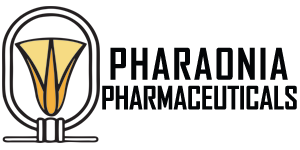

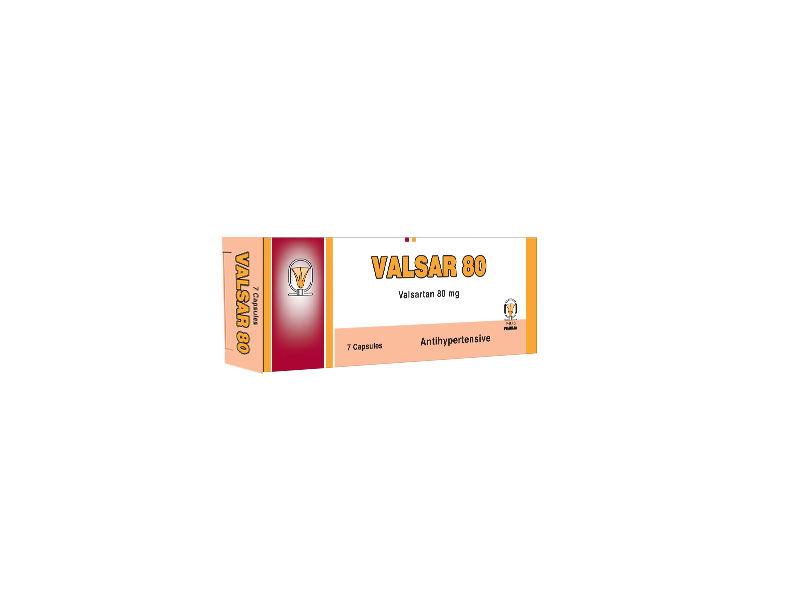
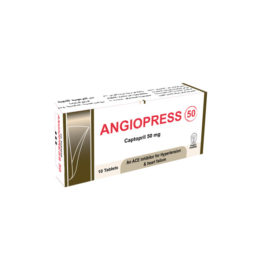


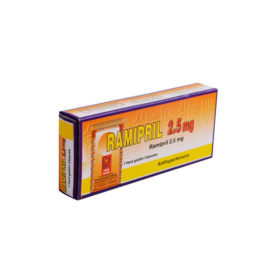
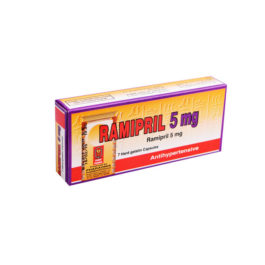
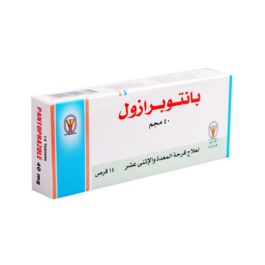
Reviews
There are no reviews yet.